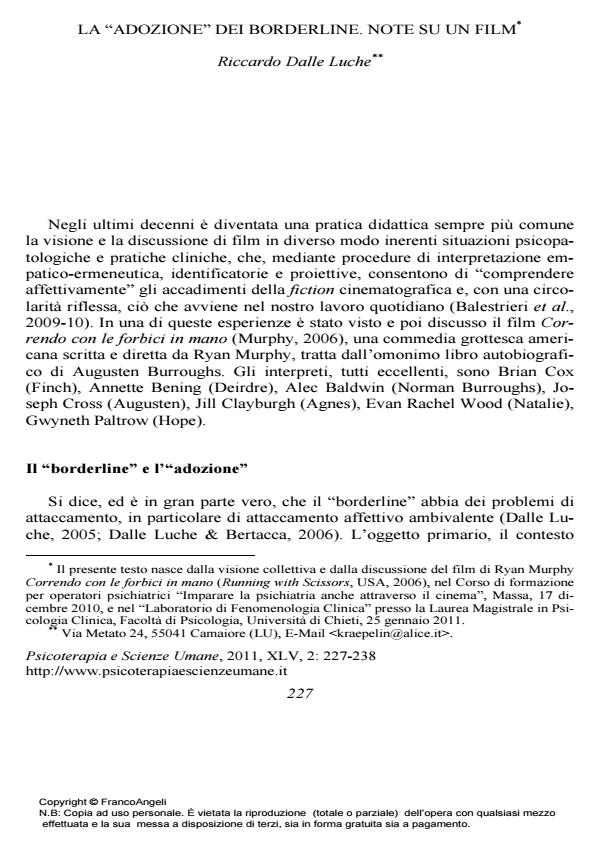The "adoption" of borderline patients. Notes on a movie
Journal title PSICOTERAPIA E SCIENZE UMANE
Author/s Riccardo Dalle Luche
Publishing Year 2011 Issue 2011/2
Language Italian Pages 12 P. 227-238 File size 337 KB
DOI 10.3280/PU2011-002005
DOI is like a bar code for intellectual property: to have more infomation
click here
Below, you can see the article first page
If you want to buy this article in PDF format, you can do it, following the instructions to buy download credits

FrancoAngeli is member of Publishers International Linking Association, Inc (PILA), a not-for-profit association which run the CrossRef service enabling links to and from online scholarly content.
In the movie Running with Scissors, directed by Ryan Murphy (2006) and adapted from Augusten Burroughs’ (2002) autobiographical novel, we can see many features of "borderline" psychopathology, both from the psychopathological and the relational points of view. In particular, we see the ambivalent struggle between dependence and idealization from one side, and devaluation and autonomy from the other. Several therapeutic mistakes and malpractice episodes characterize the professional behavior of Dr. Finch (the post-Freudian psychoanalyst depicted in the movie); in particular, he uses to "adopt" his patients and their children, mixing them with his own family, in a sort of "therapeutic community". However, he shows good therapeutic abilities during severe psychotic breakdowns of his patients. Despite Dr. Finch’s incorrect approach, the period spent by Augusten Burroughs within Dr. Finch’s bizarre family allows him to overcome his adolescence crisis.
Keywords: Borderline psychopathology, psychiatry and the movies, psychotherapy of borderline personality disorder, therapeutic community, adoption
Riccardo Dalle Luche, La "adozione" dei borderline. Note su un film in "PSICOTERAPIA E SCIENZE UMANE" 2/2011, pp 227-238, DOI: 10.3280/PU2011-002005